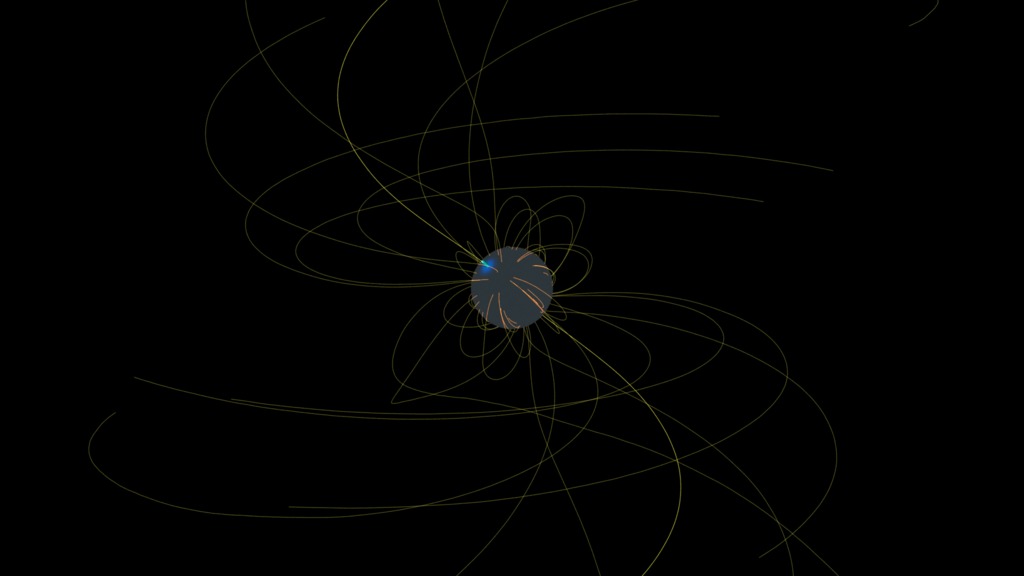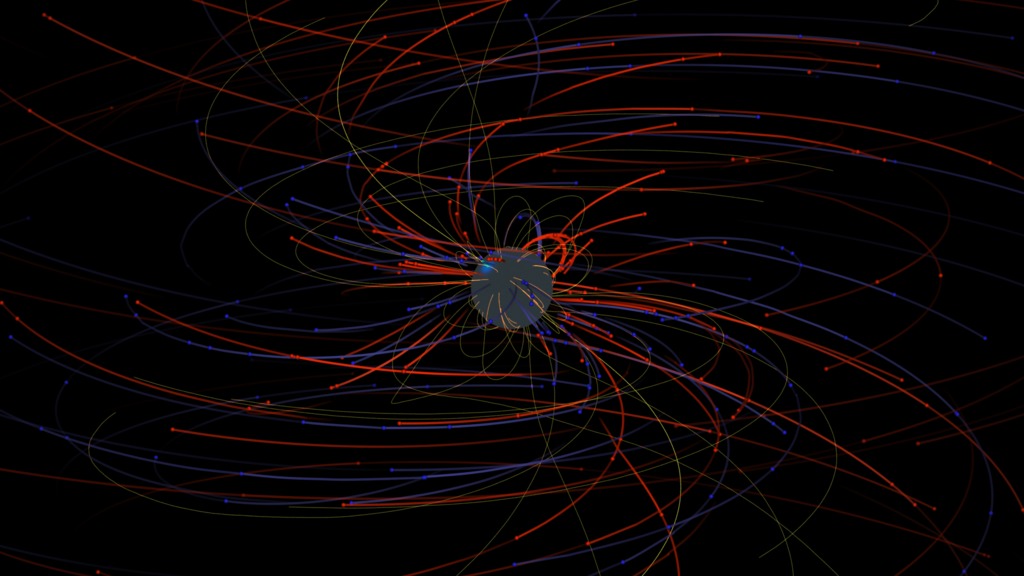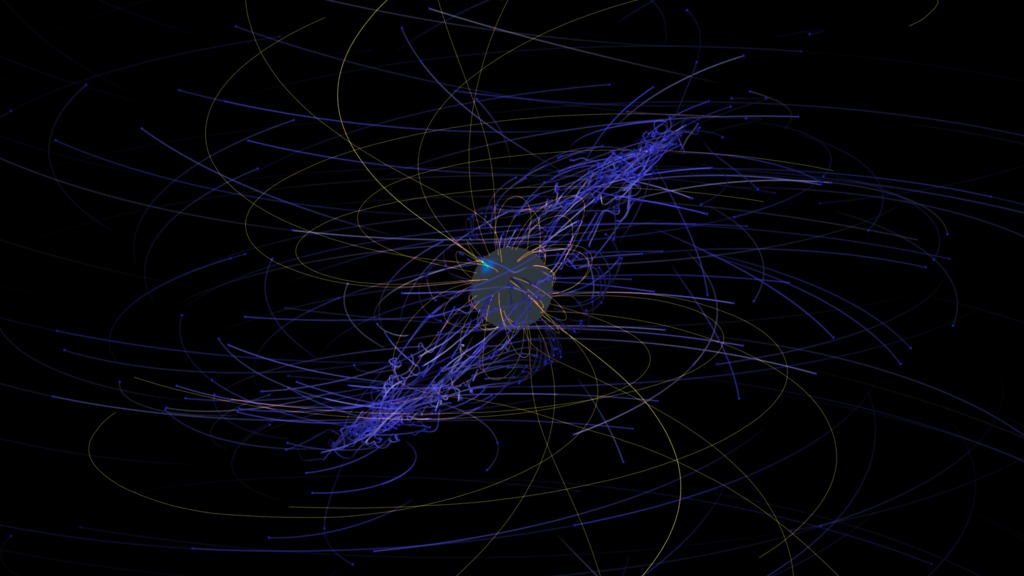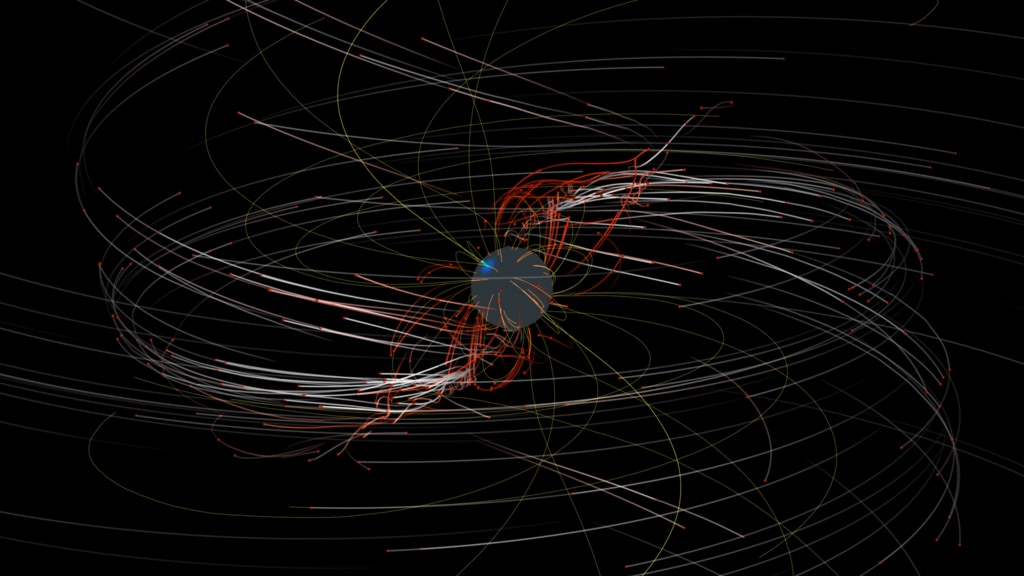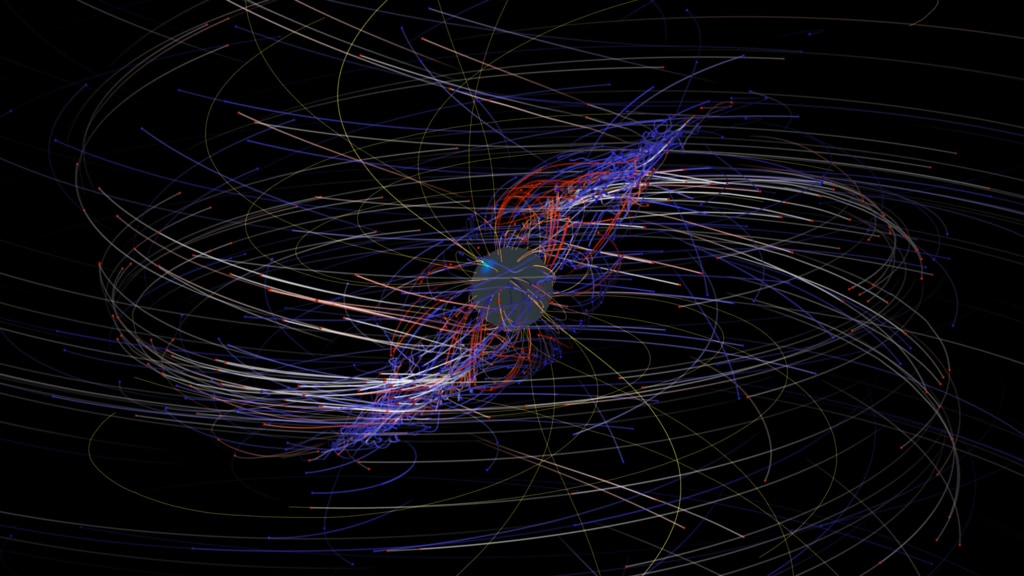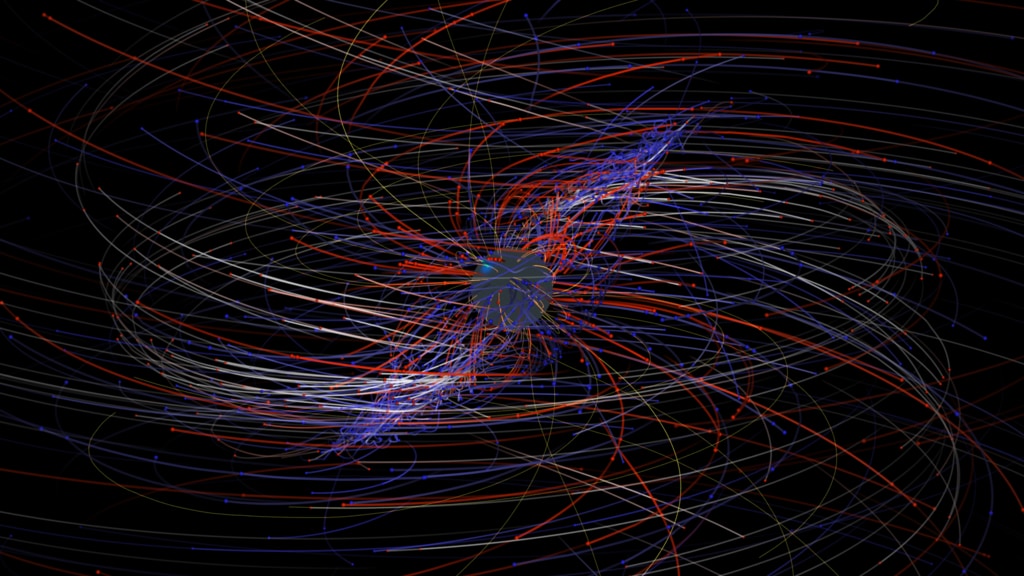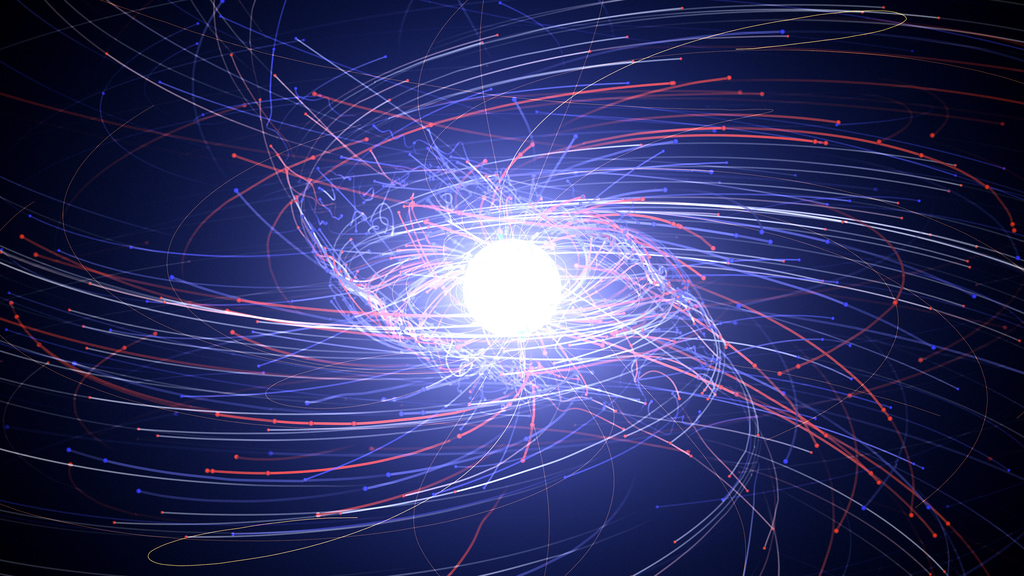Pulsars and their Magnetic Field - Vacuum solution
This movie presents a basic tour around the vacuum magnetic field solution. This version is generated with some simple reference objects for more general use.
Scientists studying what amounts to a computer-simulated “pulsar in a box” are gaining a more detailed understanding of the complex, high-energy environment around spinning neutron stars, also called pulsars. The model traces the paths of charged particles in magnetic and electric fields near the neutron star, revealing behaviors that may help explain how pulsars emit gamma-ray and radio pulses with ultraprecise timing.
A pulsar is the crushed core of a massive star that exploded as a supernova. The core is so compressed that more mass than the Sun's squeezes into a ball no wider than Manhattan Island in New York City. This process also revvs up its rotation and strengthens its magnetic and electric fields.
This visualization illustrates what the pulsar magnetic field would look like without the influence of the charged particles around it. The charged particles create currents which alter the magnetic field.
This movie presents a tour from the inertial frame and spinning up to the co-rotating frame around the vacuum magnetic field. This version is generated with some simple reference objects for more general use.
This movie presents a view of the vacuum magnetic field solution from above the rotation axis. This version is generated with some simple reference objects for more general use.
This movie presents a basic tour around the vacuum magnetic field solution. This version is generated with no background objects and an alpha channel for custom compositing.
This movie presents a tour from the inertial frame and spinning up to the co-rotating frame around the vacuum magnetic field. This version is generated with no background objects and an alpha channel for custom compositing.
This movie presents a view of the vacuum magnetic field solution from above the rotation axis. This version is generated with no background objects and an alpha channel for custom compositing.
Credits
Please give credit for this item to:
NASA's Scientific Visualization Studio
-
Data visualizer
- Tom Bridgman (Global Science and Technology, Inc.)
-
Producer
- Scott Wiessinger (USRA)
-
Writer
- Francis Reddy (University of Maryland College Park)
-
Scientists
- Gabriele Brambilla (University of Milan)
- Alice Harding (NASA/GSFC)
Release date
This page was originally published on Wednesday, October 10, 2018.
This page was last updated on Wednesday, November 15, 2023 at 12:11 AM EST.
Series
This visualization can be found in the following series:Datasets used in this visualization
-
Brambilla Pulsar Model
ID: 1013
Note: While we identify the data sets used in these visualizations, we do not store any further details, nor the data sets themselves on our site.
